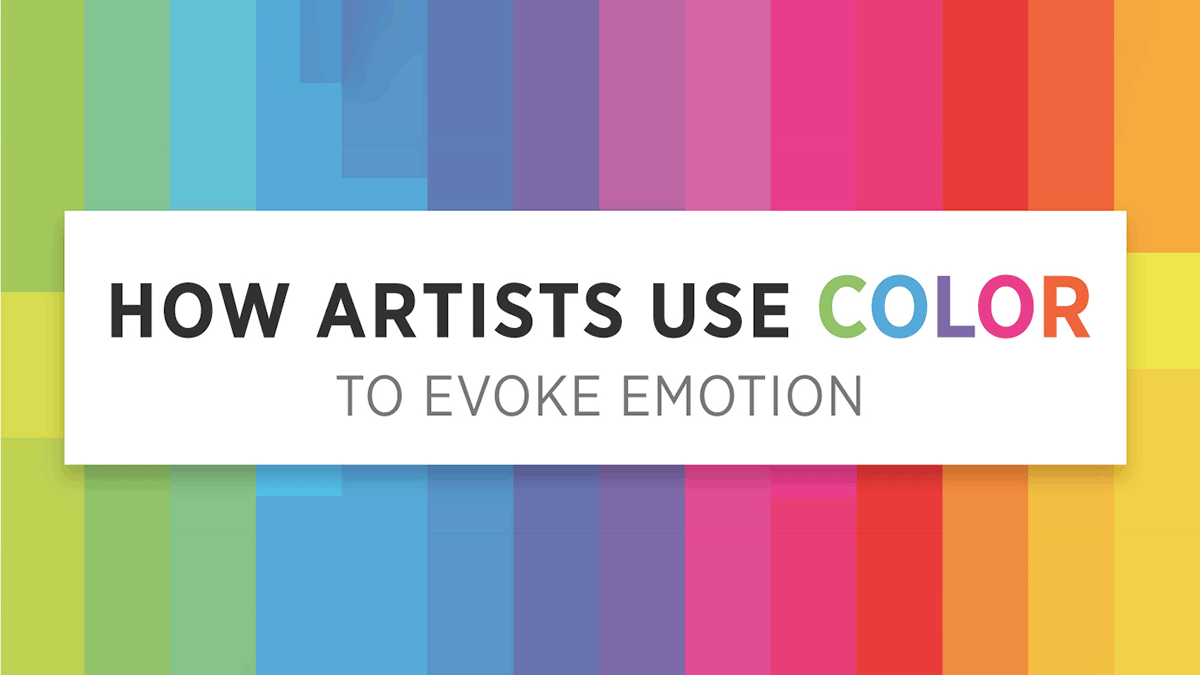Introduction to Stock Photos and Emotional Connection

In today's digital age, visuals play a crucial role in communication and storytelling. Stock photos are an accessible and versatile resource that can help you evoke emotions and create a deeper connection with your audience. But how do you choose the right images? And why do they matter so much? Let’s explore the fascinating world of stock photography and its impact on emotional engagement.
Also Read This: Top 10 Trending Photography Themes on Imago Images That Everyone Is Talking About
Understanding the Power of Visual Content

Visual content is more than just eye candy; it’s a powerful tool that can significantly enhance your marketing efforts. Here are some reasons why visuals, especially stock photos, are so effective:
- Captures Attention: In a world filled with information overload, a striking image can instantly grab your audience's attention. People are visual creatures, and a well-chosen stock photo can make your content stand out.
- Evokes Emotions: Images have the unique ability to evoke feelings. By using stock photos that resonate with your message, you can trigger emotions such as joy, nostalgia, or even empathy. This emotional connection can lead to stronger engagement and a more memorable experience for your audience.
- Enhances Understanding: Sometimes, a picture really is worth a thousand words. Well-chosen images can simplify complex information, making it easier for your audience to understand your message.
- Builds Trust: Professional stock photos contribute to your brand’s credibility. Visuals that align with your values and messaging can foster trust among your audience, which is essential for building lasting relationships.
Choosing the Right Stock Photos
When selecting stock photos, consider these factors:
- Relevance: The image should align with the content and purpose of your message. Ask yourself: Does this photo represent the idea I’m trying to convey?
- Emotional Resonance: Choose images that evoke emotions relevant to your audience’s experiences and aspirations. Do you want to inspire, motivate, or comfort your audience? Pick images that reflect those feelings.
- Quality: High-quality, professional stock photos not only look good but also reflect positively on your brand. Always opt for sharp, well-composed images.
Additionally, think about the composition of the image. Does it leave space for text overlay? Is the focal point obvious? A well-composed photo can enhance not only the aesthetics but also the effectiveness of your message!
Using Stock Photos in Your Marketing Strategy
Incorporating stock photos into your marketing strategy can take various forms, from websites and social media posts to blog articles and email campaigns. Here are a few tips:
- Consistency: Maintain a consistent style that reflects your brand’s identity. Whether it’s through color palettes, subjects, or themes, ensure cohesiveness across all visual assets.
- Experimentation: Don’t hesitate to test different images to see what resonates best with your audience. A/B testing can reveal surprising insights.
- Storytelling: Use images to tell a story. The rows of great imagery can create a narrative that hooks your audience from start to finish.
In conclusion, stock photos are not just fillers; they are powerful tools that can amplify your message and connect emotionally with your audience. By understanding the power of visual content and carefully selecting stock images, you can create compelling narratives that resonate deeply and leave a lasting impression.
Also Read This: Intraoral Images: How Often to Take a Complete Series
3. Choosing the Right Stock Photos for Your Brand

When it comes to selecting stock photos for your brand, it's crucial to understand that not all images are created equal. The right stock photo can make a world of difference in how your audience perceives your brand's identity. So, how do you make the right choice? Here are some key considerations:
- Know Your Brand's Personality: Is your brand fun and quirky, or is it serious and professional? Understanding your brand's voice and personality will guide your image selection process. For instance, playful brands might opt for vibrant, energetic images, while more serious brands might favor understated, elegant visuals.
- Target Audience Insights: Your audience's preferences should play a significant role in your choice of images. Consider their demographics, interests, and pain points. Stock photos that resonate with your target audience will create a stronger connection. Use images that reflect diversity and inclusivity to ensure representation.
- Brand Colors and Aesthetics: Visual consistency is key! Choose stock photos that align with your brand's color palette and overall aesthetic. If your brand uses a lot of earthy tones, look for images that incorporate similar hues. This ensures cohesion across your marketing materials.
- Authenticity is Key: Audiences can often tell when images feel staged or insincere. Look for stock photos that offer a sense of authenticity. Candid shots, real moments, and genuine emotions go a long way in building trust and relatability.
- Quality Matters: Breathing life into your content with high-quality images is non-negotiable. Blurry or pixelated pictures can do more harm than good. Opt for high-resolution images that reflect professionalism. They’ll enhance your brand’s credibility and attract your audience's attention.
Ultimately, the stock photos you use should tell a story that aligns with your brand’s values and mission. Spend time searching and curating images that foster an emotional connection. Great visuals can turn a simple brochure or post into something that resonates with your audience on a deeper level!
Also Read This: How Imago Images Fulfills the Demands of Today’s Digital Creatives
4. Techniques for Evoking Emotions Through Imagery
Creating great stock imagery isn't just about choosing the right image—it's about how that image can evoke emotions and connect with your audience on an emotional level. Here are some techniques you can use to ensure your chosen stock photos resonate deeply:
- Utilize Color Psychology: Different colors evoke different emotions. For instance, blue often conveys trust and reliability, while red can signify passion or urgency. Choose images that use color schemes reflecting the emotions you want to evoke in your audience.
- Facial Expressions and Body Language: Human connection is powerful. Look for images that feature people displaying a range of emotions—happiness, surprise, concern, or excitement. These expressions can draw viewers in and create an emotional bond.
- Context and Settings Matter: The setting of your stock photo can also convey a message. A cozy coffee shop might evoke feelings of warmth and relaxation, while a bustling city street could convey energy and vibrancy. Select images that complement the emotions you want your audience to feel.
- Tell a Story: Storytelling is a compelling tool for creating an emotional response. Choose images that hint at a larger narrative. For example, an image of a person looking out a window could suggest contemplation, aspirations, or longing, sparking curiosity and empathy in the viewer.
- Include Elements of Surprise or Curiosity: Sometimes, breaking expectations can make an image more memorable. Using unconventional imagery or unexpected juxtapositions can evoke curiosity, leading your audience to delve deeper into your content.
Incorporating these techniques into your stock photo selection can significantly enhance your marketing efforts. Always keep your audience in mind, and strive to create visuals that not only catch the eye but also touch the heart. In the end, the right imagery can transform your message into a beautiful, emotional experience for your audience.
Also Read This: Does Shutterstock Accept iPhone Photos? Guidelines for Mobile Photography Submissions
5. Best Practices for Integrating Stock Photos into Your Content
When it comes to using stock photos effectively, there are a few best practices that can help you maximize their impact and ensure they resonate with your audience. Here are some tips to keep in mind:
- Choose Quality Over Quantity: Always opt for high-resolution images. Blurry or pixelated photos can damage your brand’s credibility and distract from your content. Invest time in selecting images that are visually appealing and align with your brand aesthetic.
- Match Your Brand’s Voice: The stock photos you choose should reflect your brand’s personality and values. If your brand is playful and approachable, then vibrant, fun images might work best. Conversely, a serious and professional brand might prefer muted tones and more formal imagery.
- Be Mindful of Context: Always consider the context in which your images will be viewed. A photo that works on your website might not have the same impact on social media. Tailor your choices to fit the platform and the audience’s expectations.
- Emphasize Diversity and Inclusion: Representation matters. Make sure your stock photo choices reflect the diversity of your audience. This not only broadens your appeal but demonstrates that your brand is inclusive and respectful.
- Enhance with Customization: Don’t hesitate to customize stock photos to better suit your needs. This might involve adding your brand colors, overlays, or text. Such adjustments can enhance the emotional connection and personalize the images for your audience.
By following these best practices, you'll not only choose the right stock photos but also integrate them seamlessly into your content, allowing you to forge stronger connections with your audience.
Also Read This: The Top Stock Photo Websites for Buying and Selling Images
6. Case Studies: Successful Brands Utilizing Stock Photos
To illustrate the effectiveness of stock photos in brand storytelling, let’s explore a few case studies of brands that have successfully harnessed this visual tool to engage their audiences.
1. Airbnb: Airbnb has mastered the art of using stock images that evoke feelings of comfort and home. Their choice of photos showcases real people in real environments, inviting potential renters to envision themselves in those spaces. By featuring diverse individuals and families, Airbnb effectively communicates its message of inclusivity and belonging, which resonates deeply with travelers seeking unique experiences.
2. Buffer: Buffer, a social media management platform, uses stock photos to create a relatable visual narrative in their blogs and social media posts. They often choose photos that illustrate common struggles faced by their users, such as managing time or engaging audiences online. This approach not only humanizes the brand but also fosters a deep emotional connection with their audience, as readers can see themselves in the scenarios depicted by the images.
3. Canva: Canva has built a significant part of its brand around the idea of empowerment through design. They utilize bright, vibrant stock images that inspire creativity and positivity. Their marketing materials often feature user-generated content alongside professional stock photos, creating a mix that feels authentic and relatable. This strategy has helped them grow a loyal community of users who connect with the brand’s message and vision.
These case studies underscore the power of stock photos as a tool for evoking emotions and establishing connections. By selecting the right images and using them strategically, brands can enhance their storytelling and create lasting impacts on their audience’s perceptions and feelings.
Also Read This: QT Imaging Cost Guide: What to Expect
7. Resources for Finding High-Quality Stock Photos
When it comes to sourcing high-quality stock photos that resonate with your audience, the internet is a treasure trove of resources. Whether you’re looking for image banks or platforms with free options, you’ll find plenty of places to get stunning visuals. Here’s a list of some of my favorite resources for finding stock photos:
- Unsplash: Unsplash offers a vast library of free high-resolution images contributed by photographers from around the world. You can find everything from breathtaking landscapes to candid lifestyle shots perfect for evoking emotion.
- Pexels: Similar to Unsplash, Pexels offers free stock photos and videos. Their collection is curated to ensure high quality, making it easy to find images that align with your brand.
- Shutterstock: A giant in the stock photo industry, Shutterstock provides millions of professional images, videos, and music tracks. While it’s a paid resource, their subscription plans are often worth it for businesses seeking high-quality content.
- Adobe Stock: If you're already in the Adobe ecosystem, Adobe Stock is a great option. It offers a wide variety of high-quality images, and you can easily integrate them into your design projects.
- Canva: While Canva is primarily a design tool, it also has an extensive library of stock photos. Many are free, and if you’re a Canva Pro user, you get access to even more premium images.
- Depositphotos: This platform is known for its large library and flexible pricing models, including pay-per-download options. It’s a great resource for businesses of all sizes.
- Pixabay: A well-known platform that offers an extensive collection of free stock images, videos, and music. Pixabay images are free to use for commercial purposes, which adds to its appeal.
Once you’ve identified the right resource, here are a few tips to enhance your search for the perfect images:
- Use specific keywords: Instead of broad terms like "people" or "nature," try using more specific phrases that describe the mood or context you're aiming for, such as "happy family picnic" or "serene mountain sunrise."
- Look for unique perspectives: Don’t always settle for the first few results. Explore different images and compositions to find visuals that really capture the essence of your message.
- Check for licenses: Always make sure to review the licensing agreements for each image. While many stock sites offer free use, there are often restrictions for commercial use or modifications.
In short, the right stock photo can elevate your content, helping you evoke emotions effectively. Take advantage of these resources and keep your brand’s visual storytelling strong!
8. Conclusion: Elevating Your Brand with Stock Photography
In today’s fast-paced digital landscape, the importance of connecting with your audience on an emotional level cannot be overstated. Stock photography provides a unique opportunity to do just that. By carefully selecting images that resonate with your target audience, you can significantly enhance your brand’s messaging and create a lasting impact.
When used effectively, stock photos can:
- *Boost Engagement: Eye-catching visuals grab attention. When your audience is engaged, they are more likely to interact with your content.
- Tell a Story: Images can convey complex ideas and emotions quickly. They allow you to tell a story without relying solely on words.
- Create Consistency: A well-curated collection of images can help establish a consistent brand identity. Consistency breeds recognition and trust.
- Enhance Professionalism:* High-quality images elevate your content, making it appear more polished and credible. This is critical in building trust with your audience.
As you navigate the world of stock photography, remember to stay authentic to your brand. Choose images that align with your values and resonate with the emotions you want to convey. By doing so, you don’t just fill your content with pretty pictures; you create a genuine connection with your audience that can lead to increased loyalty and engagement.
So, as you move forward, keep stock photography at the forefront of your visual strategy. Let those emotions shine through your visuals, and watch as your audience responds! Happy image hunting!
 admin
admin








